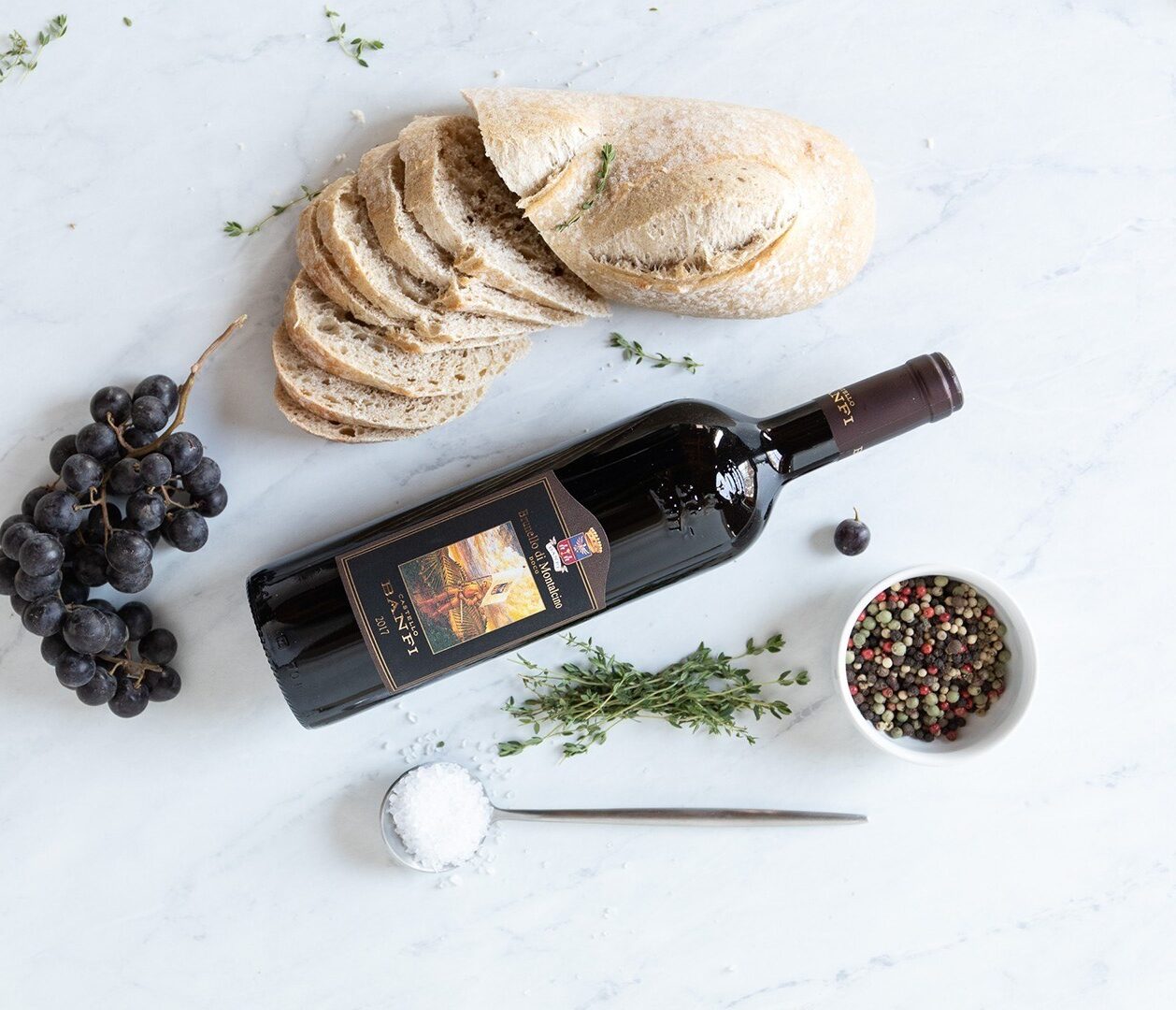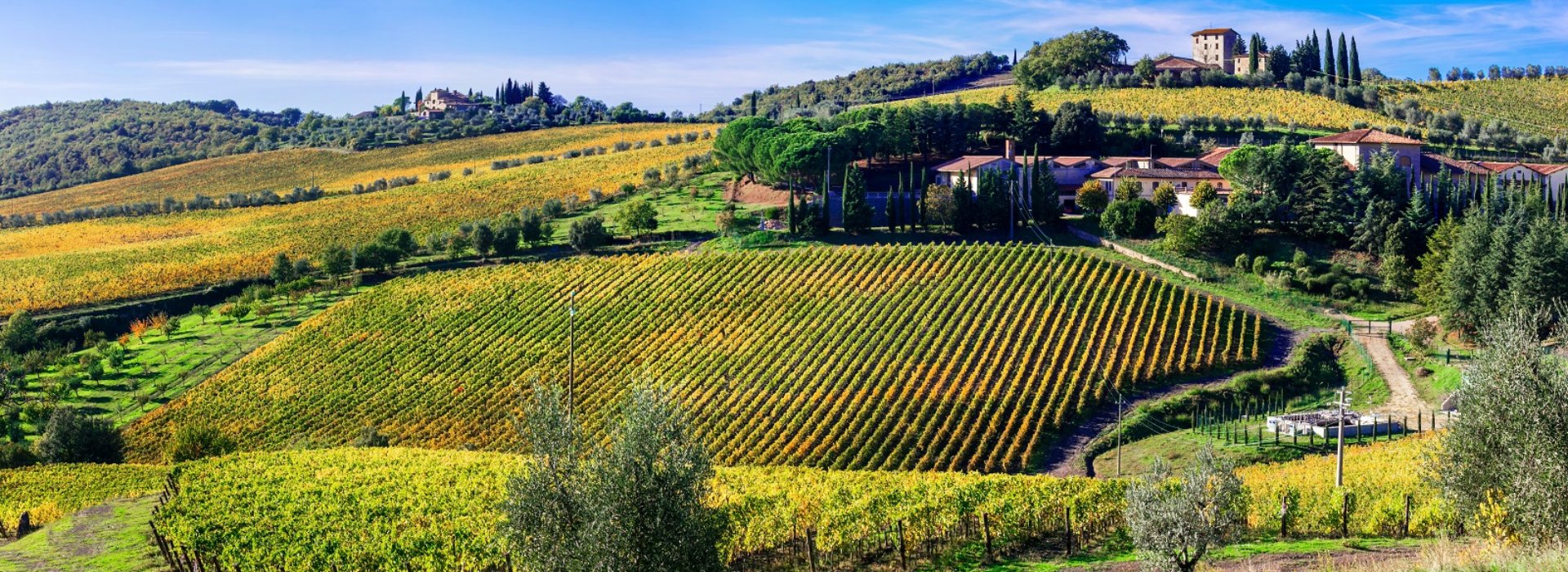5 Curiosities About Brunello di Montalcino You Didn’t Know
When talking about prestigious Italian wines, one of the first names that comes to mind is undoubtedly Brunello di Montalcino. This Tuscan red wine, a symbol of oenological excellence, is loved and sought after worldwide. Yet, behind its fame and undeniable quality, lie surprising details and stories that few know. In this article, you will discover 5 curiosities about Brunello di Montalcino that you probably didn’t know, delving into the historical, cultural, and production aspects that make this wine unique.
1. Brunello di Montalcino Was Born Thanks to a Family’s Vision
Brunello di Montalcino has a relatively recent history compared to other Italian wines. Its official birth is credited to the Biondi-Santi family, who, in the 19th century, had the intuition to experiment with a particular variant of Sangiovese, known as Sangiovese Grosso. Ferruccio Biondi-Santi, an oenologist and innovator, decided to vinify this grape in purity, breaking away from the Tuscan tradition that involved blending multiple varieties. The first Brunello di Montalcino, as we know it today, was produced in 1888. This wine was different from anything else produced in Italy at the time: a structured red, capable of aging for decades while maintaining its organoleptic characteristics. Today, the Biondi-Santi winery is still considered the guardian of Brunello tradition and boasts some of the most iconic vintages in wine history.

2. Strict Production Rules: A Guarantee of Quality
Brunello di Montalcino is not just a wine but the result of a production process that follows extraordinarily precise regulations set by the Brunello di Montalcino Wine Consortium. These rules, legislatively approved, ensure that every bottle meets the highest quality standards, protecting the prestige of the “Brunello” brand and its uniqueness in the global wine scene. But what exactly are these rules, and why are they so important?
Grape Variety and Production
The regulations establish that Brunello di Montalcino must be produced exclusively with Sangiovese Grosso grapes, a specific variety of Sangiovese that has perfectly adapted to the microclimate and soils of Montalcino. This grape, thanks to its thick skin and ability to accumulate sugars, gives the wine structure, complexity, and longevity. Unlike many other Tuscan wines, such as Chianti, no other grape varieties are allowed, even in minimal percentages.
Furthermore, the production area is limited to the municipality of Montalcino, a relatively small area of about 24,000 hectares, of which only 2,100 are dedicated to Brunello vineyards. This means that every bottle comes from a unique terroir, where climate, altitude, and soil composition play a crucial role in defining the wine’s characteristics.
Yield Limits and Manual Harvesting
Another fundamental rule concerns the maximum yield per hectare, which must not exceed 80 quintals of grapes. This limit is essential to ensure an optimal concentration of aromatic substances and sugars in the grapes. A higher yield could compromise the wine’s quality, making it less structured and complex.
The harvest, taking place between late September and early October, is strictly manual. This method, although more expensive and labor-intensive than mechanical harvesting, allows for the careful selection of the best grape clusters, eliminating damaged or unripe ones. Every detail is meticulously attended to because wine quality starts in the vineyard.
Vinification and Aging
After harvesting, the grapes are taken to the winery for vinification, which must occur within the Montalcino territory. The regulations leave no room for interpretation: Brunello di Montalcino must be vinified in purity. The fermentation process occurs in stainless steel or concrete tanks, where the must ferments in contact with the skins for 15 to 20 days. This step is crucial to extract color, tannins, and aromas from Sangiovese Grosso.
Once alcoholic fermentation is complete, the wine begins its long aging process, one of Brunello’s most distinctive aspects. By law, the wine must age for at least five years before being marketed, with at least two years spent in wooden barrels. These barrels, usually made of Slavonian or French oak, play a key role in the wine’s evolution, allowing slow oxygenation that softens the tannins and enriches the aromatic bouquet with notes of vanilla, spices, leather, and tobacco.
After aging in wood, the wine must rest for at least four months in the bottle to complete its maturation. This additional resting period allows Brunello to reach perfect balance, offering a unique sensory experience.
Controls and Certifications
Each batch of Brunello di Montalcino undergoes rigorous checks by a commission of experts, who analyze the wine both chemically and organoleptically. Only if it passes these tests can the wine receive the DOCG (Denominazione di Origine Controllata e Garantita) certification and the numbered label guaranteeing its authenticity. This traceability system is an additional assurance for consumers, ensuring they are purchasing an authentic and high-quality product.
3. Brunello di Montalcino Was the First Italian Wine to Obtain DOCG
Many wine enthusiasts know about the DOCG (Denominazione di Origine Controllata e Garantita) designation, the highest recognition for Italian wines, but few are aware that Brunello di Montalcino was the first wine to receive this certification. In 1980, Brunello was awarded DOCG status in recognition of its superior quality and rigorous production process. This milestone helped solidify Brunello di Montalcino’s international reputation, paving the way for many other Italian wines that later received the same recognition. Even today, the DOCG seal is a symbol of excellence that distinguishes Brunello from other wines.

4. Montalcino: A Unique Terroir
To truly understand Brunello di Montalcino, one must know its territory. Montalcino, a small town in the heart of Tuscany, enjoys an exceptional microclimate and soil, making it a true paradise for viticulture. The mild climate, influenced by proximity to the sea and protected from the cold Apennine winds, allows the grapes to ripen slowly, developing an extraordinary concentration of sugars and aromas. Additionally, Montalcino’s terrain is incredibly diverse: from clay-rich soils to those rich in limestone, to ancient marine sands. This diversity is reflected in the wines, which can vary significantly depending on the production area. For example, Brunellos produced in the southeast tend to be more powerful and structured, while those from northern areas are more elegant and fresh.
5. Brunello di Montalcino as an Investment
Another lesser-known curiosity is that Brunello di Montalcino is not just a wine to enjoy but also an investment opportunity. Certain exceptional vintages, such as 1997, 2010, and 2016, have reached very high market prices, becoming highly desirable for collectors and wine enthusiasts. Brunello is known for its ability to age for decades, improving over time. This makes it a perfect product for those looking to diversify their portfolio with tangible assets. Moreover, the limited number of bottles produced each year and the increasing focus on high-quality wines make Brunello an increasingly interesting investment. Some historic bottles, such as those from the Biondi-Santi winery, have been auctioned for staggering amounts.
These 5 curiosities about Brunello di Montalcino prove just how unique this wine is. Behind every glass of Brunello lies a story of passion, tradition, and innovation. Whether you are a wine enthusiast or simply curious, Brunello di Montalcino represents an unparalleled sensory and cultural experience. So why not taste it and be captivated by its complex aromas and timeless elegance? Who knows, next time you have the chance, you might impress your friends with one of these curiosities!
